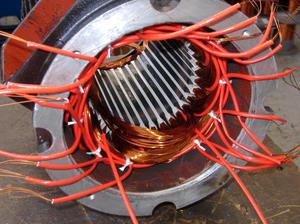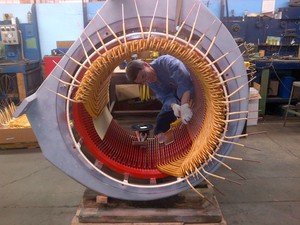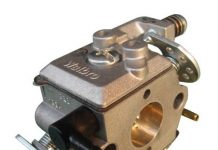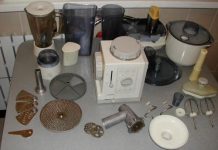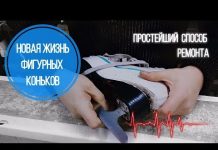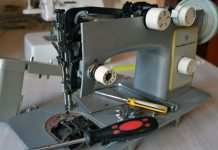In detail: DIY repair of an electric motor winding from a real master for the site my.housecope.com.
In many household devices and home-made structures, low-power electric machines are used as a drive. Despite the high reliability of electric motors, their failure for a number of reasons is not uncommon. Given the relatively high cost of these devices, it is more practical to repair them rather than replace them. We suggest considering the possibility of rewinding electric motors at home.
As a rule, collector DC motors and brushless AC induction motors are used in everyday life. It is the repair of these drives that we will consider. Information on the principle of operation and design features of asynchronous and collector machines can be found on our website.
As for synchronous drives, they are practically not used in everyday life, therefore this topic is not touched upon in this publication.
Any type of engine problem can be mechanical or electrical. In the first case, strong vibration and characteristic noise may indicate a malfunction, as a rule, this indicates problems with the bearing (usually in the end cover). If the malfunction is not eliminated in time, the shaft can jam, which will inevitably lead to failure of the stator windings. In this case, the thermal protection of the circuit breaker may not have time to trip.
Based on practice, in 90% of failure of asynchronous machines, problems arise with the stator winding (open circuit, turn-to-turn circuit, short circuit to the case). In this case, the short-circuited armature, as a rule, remains in working condition. Therefore, even with a mechanical nature of the damage, it is necessary to check the electrical part.
| Video (click to play). |
In most cases, the problem can be detected by its appearance and characteristic odor (see Fig. 1). If it is not possible to establish a malfunction empirically, we proceed to diagnostics, which begins with a continuity call. If found, the engine is disassembled (this process will be described separately) and the connections are carefully inspected. When the defect is not found, it is possible to ascertain a break in one of the coils, which requires rewinding.
If the continuity does not show an open circuit, you should proceed to measuring the resistance of the windings, while taking into account the following nuances:
- the insulation resistance of the coils to the case should tend to infinity;
- for a three-phase drive, the windings must show the same resistance;
- for single-phase machines, the resistance of the starting coils exceeds the given indications of the working windings.
In addition, it should be borne in mind that the resistance of the stator coils is quite low, so it makes no sense to use devices with a low accuracy class to measure it, most multimeters belong to those. The situation can be corrected by collecting a simple circuit on a potentiometer with the addition of an additional power source, for example, a car battery.
The measurement technique is as follows:
- The drive coil is connected to the diagram presented above.
- The potentiometer sets the current to 1 A.
- The coil resistance is calculated according to the following formula: where RTO and UPETE were described in Figure 2. R is the resistance of the potentiometer, is the voltage drop across the measured coil (shown by the voltmeter in the diagram).
It is also worth talking about the technique that allows you to determine the location of the turn-to-turn closure. This is done as follows:
The stator, freed from the rotor, is connected through a transformer to a reduced power supply, after placing a steel ball on it (for example, from a bearing). If the coils are working, the ball will cyclically move along the inner surface without stopping. If there is a turn-to-turn short circuit, it "sticks" to this place.
This type of electric machine is more likely to experience mechanical failures. For example, erasing brushes or clogging the collector contacts. In such situations, repairs are reduced to cleaning the contact mechanism or replacing the graphite brushes.
Testing the electrical part is reduced to checking the resistance of the armature winding. In this case, the probes of the device to two adjacent contacts (lamellas) of the collector, after taking the readings, the measurement is made further in a circle.
The displayed resistance should be approximately the same (taking into account the instrument error). If a serious deviation is observed, then this indicates that there is an inter-turn short circuit or an open circuit, therefore, rewinding is necessary.
This is a reference data, so the most reliable way to get this information is to consult the appropriate sources. These data can also be given in the passport for the product.
On the net you can find tips in which it is recommended to manually recalculate the turns and measure the diameter of the wire when rewinding. It's a waste of time. It is much easier and more reliable for marking the engine to find all the necessary information, which will indicate the following parameters:
- rated performance (voltage, power, current consumption, speed, etc.);
- number of wires for one slot;
- Ø wire (as a rule, insulation is not taken into account in this indicator);
- information about the outer and inner diameter of the stator;
- number of grooves;
- with what step the winding is performed;
- rotor dimensions, etc.
Below is a fragment of a table with winding data for type 5A electric machines.
It is necessary to immediately warn that without special equipment and work skills, rewinding the coils will most likely be a useless exercise. On the other hand, a negative experience is also an experience. Understanding the complexity of a process is the best explanation of its cost.
We give an algorithm of actions for asynchronous machines, it is as follows:
- Disconnect the drive from the mains (380 or 220 V).
- We dismantle the electric motor from the structure where it was installed.
- Remove the rear cooling fan shroud.
- We dismantle the impeller.
- We unscrew the fastening of the end caps, and then remove them. It is advisable to start from the front part; after dismantling it, the rotor will easily "come out" from the rear cover.
- We take out the rotor.
This process can be greatly facilitated if you use a special device - a puller. With its help, it is easy to free the motor shaft from the pulley or gear, and also to remove the end covers.
We will not give instructions for disassembling a collector motor, since it is not particularly different. The structure of this type of electric machine can be found on our website.
The sequence of actions is as follows:
- Using a knife, remove the bandage fasteners and the insulating coating from the wire connections. Some instructions recommend fixing the wiring diagram, for example by taking a photo. There is no particular point in doing this, since this is a reference information and it is not a problem to recognize it by the make of the engine.
- Using a chisel, we knock down the tops of the wires from each end of the stator.
- We release the grooves using a punch of the appropriate diameter.
- We clean the stator from dirt, soot, impregnation varnish.
At this stage, we recommend that you stop, take the case and take it to the specialists. Self-dismantling will reduce the cost of restoration work.As mentioned above, it is quite difficult to rewind the coils with high quality without special equipment. To understand the complexity of the process, we will describe its technology, which will facilitate the choice.
The process consists of the following steps:
- Installation of insulators in each groove (sleeve).
- The thickness of the material and its characteristics are selected according to the reference book.
- The winding data is determined by the brand of the motor.
- On a special machine, the required number of turns of the random coils is wound. On the network you can find photos and parameters of homemade hand-held machines, but the quality of their work is rather questionable.
Loose winding machine
- The coil groups are placed in the grooves, after which they are strapped and connected. These processes are quite complex and manual.
- Impregnation is in progress. For this, the body is heated to a temperature of 45 ° C - 55 ° C and is completely immersed in a container with impregnating varnish. It makes no sense to fill the wires with varnish, since in this case there will still be voids left.
- After impregnation, the body is placed in a special chamber, where it is dried at a temperature of 130-135 ° C.
- Final testing of the coils with an ohmmeter.
- Assembly and test run (if only the body was transferred for repair, and the rest of the parts and fasteners).
If only the case was handed over for restoration, we recommend checking the coils before turning on the motor.
The process of replacing the winding of a collector motor is somewhat similar, with the exception of small nuances associated with the design feature. For example, the anchor is sent for rewinding, and not the case, provided that the problem did not arise with the excitation coils. In addition, there are the following differences:
- A special machine of a more complex configuration is used for winding.
- It is imperative to groove, balance the armature (in the final part of the process), as well as clean and grind it.
- Using a special milling machine, the collector is cut.
These processes require special equipment, without it, rewinding of electric motors is a waste of time.
Any tool is subject to overload and various damage. You can drop a power tool, spill liquid on it, as a result of which rust appears on the windings, which will render the engine unusable. Do-it-yourself rewinding of an electric motor is quite simple, but a minimum set of tools is required.
Most importantly, you need skill and experience in repairing. If the power tool is used improperly, it is the rotor winding that takes the whole blow. The wire from which it is made may break or burn. But if you replace the winding, then the tool life will increase significantly.
In order to independently rewind the electric motor armature with your own hands, you will need the following tools and devices.
- A multimeter or voltage indicator, as well as a 12 V lamp (power no more than 40 W), a megohmmeter.
- The winding wire, its diameter should be exactly the same as that of the failed electric motor.
- Dielectric cardboard 0.3 mm thick.
- Electric soldering iron.
- Thick cotton threads.
- Epoxy resin or varnish.
- Sandpaper.
Before starting work, it is necessary to accurately establish the breakdown. To do this, it is necessary to visually inspect the electric motor and check if there is voltage to the collector. Diagnose the start button, ring it with a multimeter. Only if the power circuit is fully functional, it is necessary to disassemble the electric motor and repair it.
Before starting work, you must study the instructions for rewinding electric motors. If you do this with your own hands, it will take at least 4 hours, and this is only for rewinding the anchor. Before starting repairs, you must complete the following steps.
- Count the number of slots on the anchor.
- Recalculate the number of lamellae on the manifold.
- Determine with what step the winding was made. Most often, the coils are placed in the initial groove, after which in the seventh, and attached to the first.
Reset to the left or right is also sometimes used. If winding with a reset to the right occurs, the coil goes to the right of the beginning of the winding. For example, if there are 12 slots in the anchor, the winding step is 1-6 and the reset is made to the right, the winding is laid in the first one, after which in the eighth and fastening is carried out in the second slots. All these points must be taken into account, otherwise after repair it will turn out that the electric motor rotates in the other direction.
In order to rewind email. engines in a domestic environment, it is necessary to memorize, write down, or photograph each stage of the work. This will greatly facilitate the repair and avoid assembly inaccuracies. To determine the direction of winding and the starting groove, it is necessary to find a coil that is not covered by others. It is she who is the last.
In the event that the winding is laid to the right, then the initial groove is to the right of the extreme coil. It is from here that you need to start laying the wire. This is the only way to achieve the most accurate winding, very close to the factory one. If the original winding is symmetrical, coils are stacked in pairs in it, then there will be two initial slots. You can find them in the same way as in the previous case.
The master definitely needs to find out how many turns of wire are laid in one groove and in the whole coil. To do this, you need to separate the coil located on top and count how many turns there are. If necessary, disassemble with a gas burner. The number of turns in the groove directly depends on:
- the number of lamellas on the manifold;
- the number of slots on the anchor.
After the calculation, it is necessary to prepare the collector; it is not required to dismantle it. To do this, you just need to measure the resistance value between the body and the lamellas.
The resistance should be in the range of 200-250 kOhm. After that, it is necessary to completely dismantle the old conductor, for this remove the winding. Protect all grooves and armature body carefully. Carbon deposits, burrs, be sure to grind with sandpaper. After that, it is necessary to cut rectangular pieces from cardboard, corresponding to the dimensions of the grooves in the anchor.
After that, you can start winding new conductors. The circuit must be the same as in the factory. Begin laying from the starting groove, observe the ejection and winding pitch. Fasteners are made using cotton threads directly at the collector. It is not recommended to use synthetic threads, as they are prone to burning.
After completing all work, it is necessary to check the windings for interturn short circuits and breaks. If there are no breakages, then it is necessary to apply epoxy resin or varnish to the winding. To speed up the process, you need to place the anchor in the oven, setting the temperature in it to 80 degrees. Drying should be carried out for at least 20 hours.
In order for the power tool to work as efficiently as possible after repair, balancing will need to be done. Since all work is done at home, you should definitely follow certain recommendations. Do-it-yourself rewinding of an electric motor is quite simple, it will be much more difficult to balance it.
- Pick up two steel blades. They should be even and smooth.
- These blades must be installed in parallel and fixed to a rigid base.
- Between them it is necessary to maintain a distance that is equal to the size of the rotor.
- Place the rotor on these steel blades and watch it move.
- The anchor will definitely start to turn, the heaviest part will be at the bottom.
- It is necessary to shift the center of gravity to the axis of the rotor, fixing weights on it.
After balancing, the anchor must be stationary.
In order to equalize the sides of the rotor, it is necessary to hang small weights made of plasticine on it. Only after you reach equilibrium, you need to remove the plasticine weights, weigh them, and solder the metal. After that, be sure to recheck the balancing.
Asynchronous motors can be single and three phase. There are peculiarities of checking these machines.
- For single-phase asynchronous devices, the starting winding has a greater resistance than that of the working one. You can check this using any multimeter.
- The resistance between the windings and the motor housing must be large.
- In three-phase motors, all windings have the same resistance.
To find out more accurate parameters of the engine, you need to read the information that is on its body. It has a plate with all the operating parameters, and sometimes even with winding connection diagrams.
Before rewinding the stator of an asynchronous electric motor, it must be completely disassembled. To do this, you will need to use a puller, since the covers are very tightly mounted on the bearings. Try to carry out all work as carefully as possible so as not to destroy the cover and not damage the winding.
Squirrel-cage rotors very rarely break, so you do not need to touch it during repairs. You only need to change the windings on the stator. In the event that there is blackening on the wires, this indicates a breakdown in the engine. All connections in asynchronous motors are practically invisible, since they are very well insulated, because the fastening is made with a bandage.
After disassembling, be sure to remove the old winding. To do this, you need to cut off all the ropes with a sharp knife and get rid of the glue. The wires are cleaned of dirt as much as possible, without destroying the electrical connections. It is advisable to take photographs of all connections in order to do everything correctly during assembly. Be sure to draw up a connection diagram for all windings, you can use reference books for this.
Then it is necessary to knock out stakes made of PCB or wood, which are located inside the stator grooves. After that, dismantle the gaskets, freeing the wires. Find the outermost wire, take it to the middle of the stator, it should completely peel off from the winding. After that, unwind the next turn, until you completely free the groove.
There are several ways to rewind the stator of an asynchronous electric motor, but when choosing any of them, be sure to remember each step during disassembly. This will facilitate the repair, and significantly. For winding, you will need a copper wire in varnish insulation, its cross-section should be the same as on the electric motor being repaired.
Make sure that there is no damage to the housing and the magnetic core of the electric motor. After that, it is necessary to make sleeves, install them in the grooves on the stator. In order not to count the number of turns, not to determine the thickness, strength and heat resistance of materials for the manufacture of sleeves, you can use the reference literature. To do this, you need to find out the type and model of the asynchronous motor.
All work in specialized workshops is performed on machine tools. The machine even calculates the number of turns. But how to rewind an electric motor at home if there are no such conditions? You will have to calculate everything yourself, or take all the data from the service book for the electric motor.
After laying all the windings in the grooves, it is necessary to insert insulators between the coils. The band must be carried out on the back of the stator. Pass the thread through all the loops, while trying to pull together all the insulators and wires. Make sure that the insulation plates do not slip out of place.
It is imperative, upon completion, to diagnose the entire winding, then warm up the stator and apply a special varnish.The stator must be completely immersed in the varnish. This is how you can achieve the maximum mechanical strength of the windings, because fill in the voids and grooves. This completes the rewinding of the electric motor with your own hands, you can start operating.
DC rotors of screwdrivers, mixers and fans are commutator and brushless. In the latter motors, the switching of the windings located on the stator takes place with the help of a controller. Therefore, before rewinding, you must make sure that the keys and the controller itself are in good condition. AC electric motors are divided into:
- asynchronous with squirrel-cage rotor;
- synchronous or brush with phase rotor.
Failure of rotors is most often due to a short circuit in the armature. By unsoldering the conductors from the contact group and checking them for a short circuit, they find a malfunction of the contacts or rotor turns. In the event of a short circuit, the breakdown is eliminated by replacing the wire. If there are few turns, and the rotor wire is thick and without damage, then make it good insulation by placing a plate of cardboard or cloth soaked in insulating varnish.

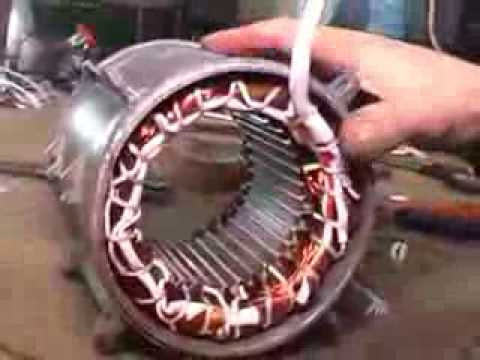
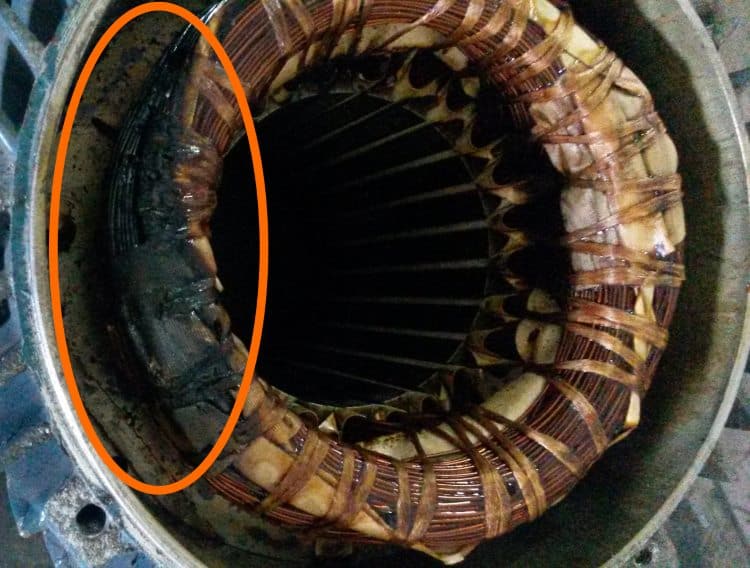
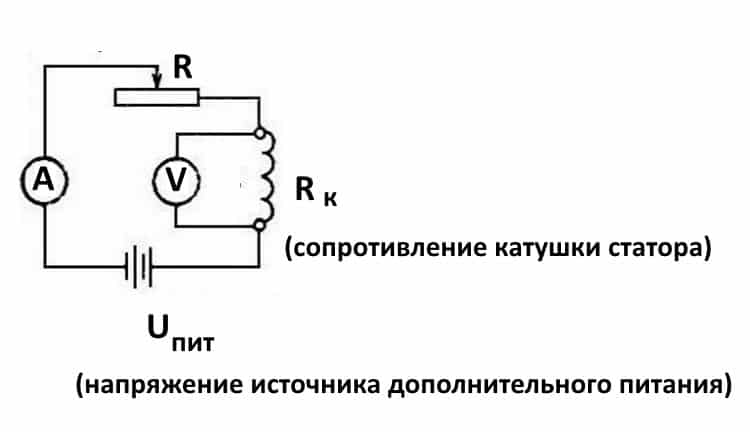
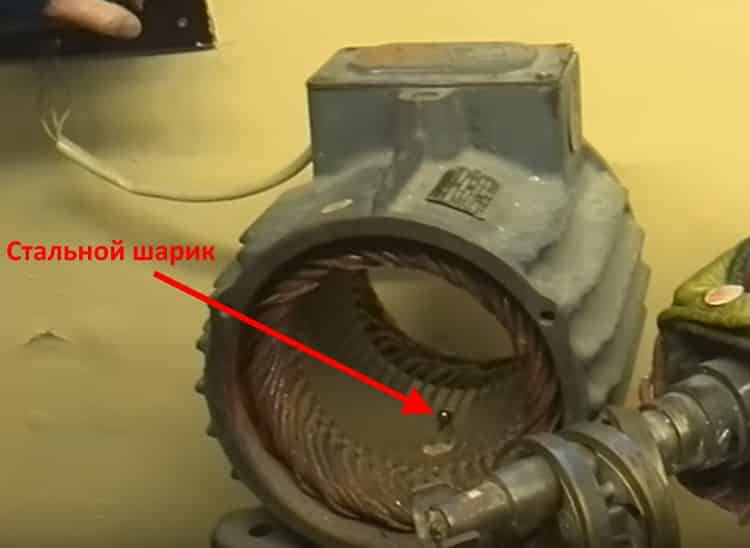

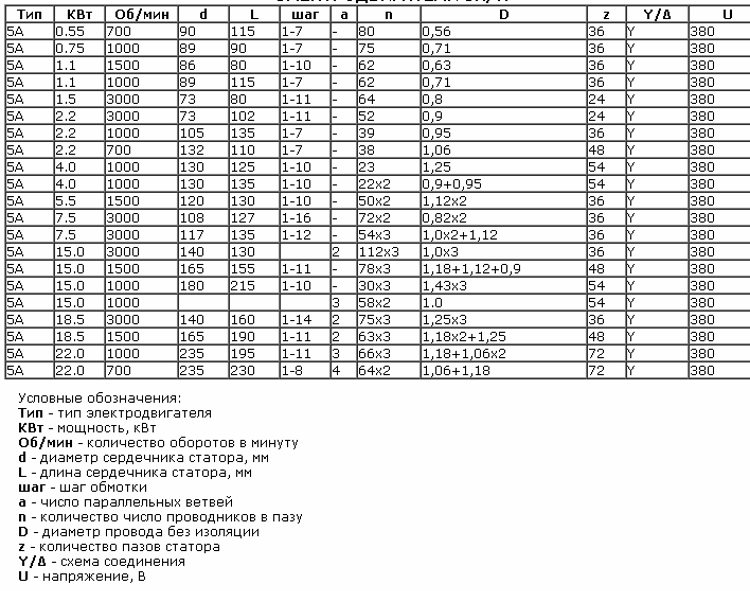
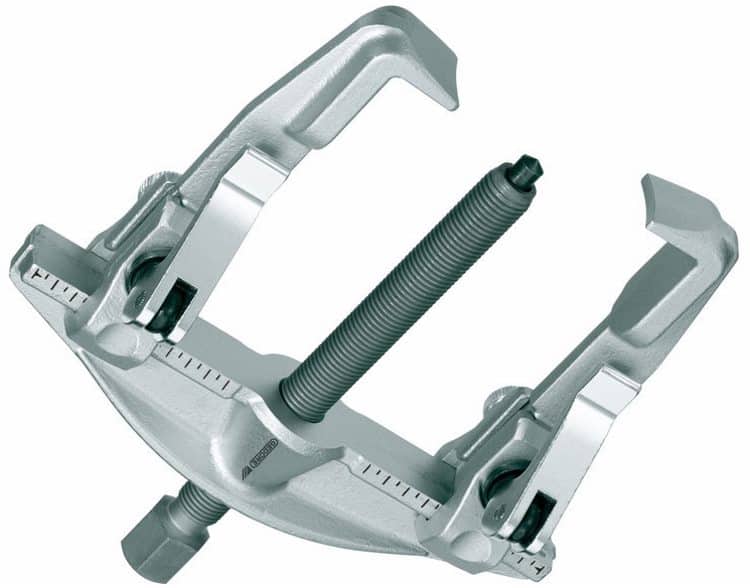
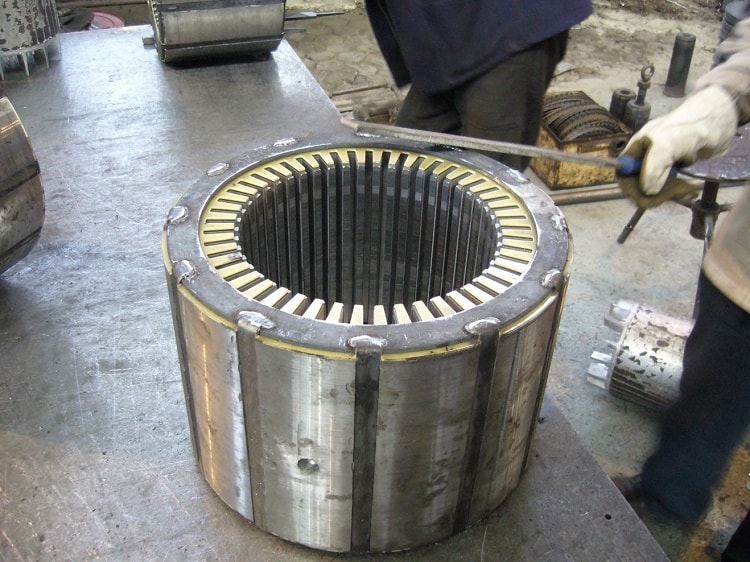
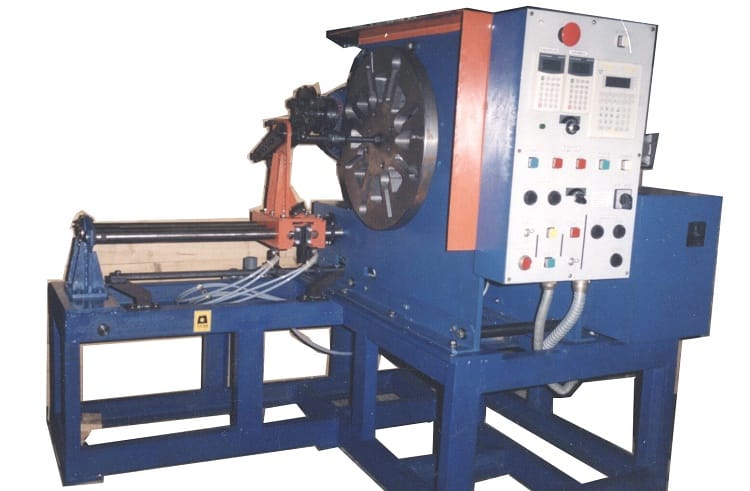 Loose winding machine
Loose winding machine